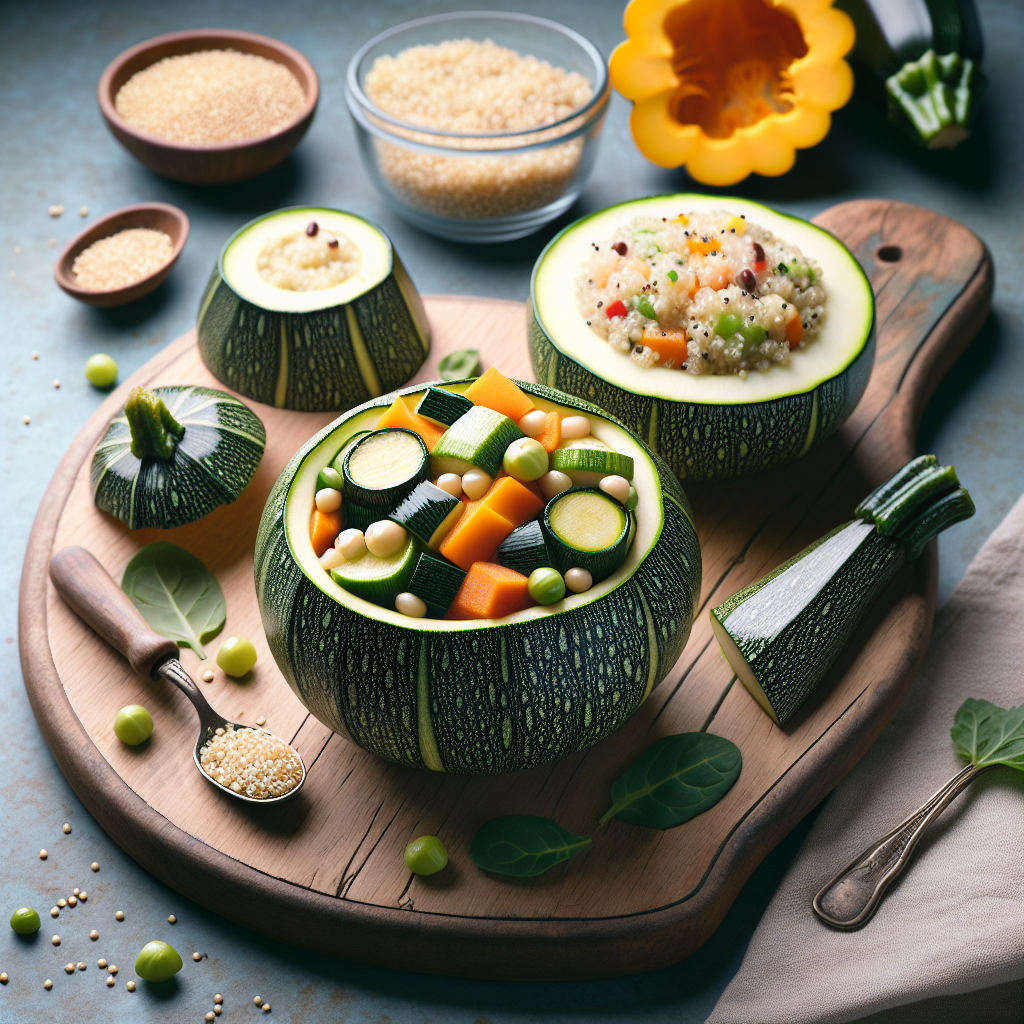Child Development: A Complete Guide to the Essential Stages
Introduction When it comes to feeding babies, every mother wants to give her baby the most nutritious and healthy options. During the rapid development period of 10 to 12 months, it is essential to introduce foods into the baby's diet that support healthy growth and development. In this article, we present to you a delicious and nutritious recipe: Squash Stuffed with Vegetables and Quinoa .
Benefits of Quinoa and Vegetables for Babies Before we get into the details of the recipe, let's talk a little about the benefits of quinoa and vegetables for babies. Quinoa is a superfood rich in complete protein, having all nine essential amino acids for the human body. It is also an excellent source of fiber, iron and magnesium. Vegetables, on the other hand, are rich sources of vitamins, minerals and antioxidants essential for a strong immune system and healthy baby brain development.
Choosing the Right Ingredients Using fresh and quality ingredients is essential when cooking for little ones. Choose organic squash if possible and a variety of colorful vegetables to maximize nutrient intake. Quinoa must be thoroughly washed before being cooked to remove saponin, a natural substance that can cause a bitter taste.
Preparing the Pumpkins Preparing pumpkins is simple. Wash them well and cut them in half lengthwise. It is important to remove the core carefully, leaving enough pulp to form the "boats" that will be filled.
Preparation of the filling The quinoa and vegetable filling is the soul of this recipe. The quinoa is boiled separately, according to the instructions on the package, and the selected vegetables are sautéed in a drizzle of olive oil, until they become soft, but do not lose their texture. The combination of vegetables can vary depending on the baby's preferences or the pediatrician's recommendations.
Assembly And Baking After the filling is ready, it is mixed with cooked quinoa and portioned into the previously prepared pumpkins. Place the boats in a baking dish, add a little water to prevent drying and cover with aluminum foil. Baking is done at moderate heat to preserve nutrients and ensure a nice texture.
SERVE After baking, let the stuffed pumpkins cool a bit before serving them to your baby. Serve them warm, not hot, to avoid any risk of burning. Depending on the development of the dentition, you can leave the pieces smaller or larger.
Conclusion The recipe for stuffed squash with vegetables and quinoa is a great option to provide a nutritious lunch or dinner for babies. It combines the benefits of quinoa with the diversity of nutrients in vegetables, providing a balanced and tasty meal. By incorporating this recipe into the child's diet, you will contribute to the healthy and harmonious development of the little one. For more recipes and tips on baby development, don't forget to subscribe to our newsletter and visit the special section of our store.
Tips and Tricks For extra flavor, you can add fresh herbs or a little grated parmesan cheese (if the baby is not lactose intolerant). You can also replace the quinoa with brown rice or another type of whole grain, depending on your child's specific preferences and needs.
Adapting to Baby's Tastes Although babies can be fussy at times, it's important to try different combinations of tastes and textures. This recipe is flexible enough to allow for experimentation and adaptation to baby's ever-changing tastes.
The Importance of Diversification Dietary diversification is crucial for child development. By gradually introducing new foods and recipes like this, you'll help develop a diverse palate and prevent allergies. Talk to your pediatrician about the diversification plan and follow their directions to ensure a smooth transition to solid foods.
Parents, remember that every child is unique and may have different developmental rates and food preferences. Let the little ones explore and enjoy this culinary adventure under your loving supervision and guidance. Bon appétit for the little foodie!














































































































































